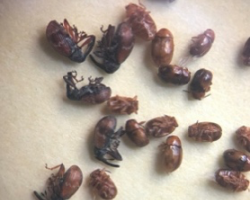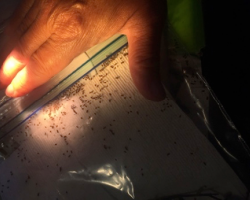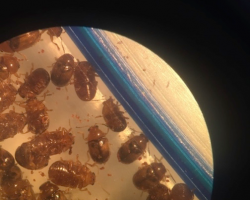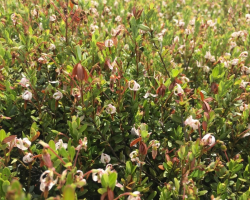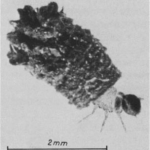Golden Casebearer (2022)
Pest Alert - July 2022
New Leaf Beetle, Triachus vacuus “THE GOLDEN CASEBEARER”
Martha M. Sylvia and Anne L. Averill
University of Massachusetts-Amherst
Cranberry Station, East Wareham, MA
In Massachusetts cranberry, a tiny golden-brown casebearer beetle, in the family Chrysomelidae, caused significant injury on new growth during bloom. Outbreak sites built up slowly. There was one damaging population in 2015, one in 2018 (both in Carver), and now there are many sites.
DESCRIPTION
The adult beetle is smaller than a cranberry weevil – only about 1-2 mm in size. USDA species identification is Triachus vacuus. Little is known about this species. 1960s MA samples collected from cranberry are located in the Smithsonian Museum collection, but the beetle has not been reported again until now.
There is another casebearer in cranberry, the fire beetle (Cryptocephalus incertus), which is commonly found on wild and abandoned bogs, and was an occasional outbreak pest in the old days. The new casebearer beetle pest is smaller than the fire beetle and does not have cream-colored stripes on its wing covers.
DAMAGE
Affected sites have multiple dark areas of vine that are readily apparent on the bog during bloom and berry set. Here, the tips of the uprights had been fed upon and other tips had been girdled. The damaged areas typically range from 3-10 feet across. Spots generally were about the size of a truck, with damage to the tips, flowers and foliage. Sweeping through the browned vines results in 100s of the beetles.
Only the adult beetle damages the cranberry vine. Damage is hard to see until late June/early July, at which point they may have already laid eggs of the new population. Low numbers are typically seen in early June, peaking in early July.
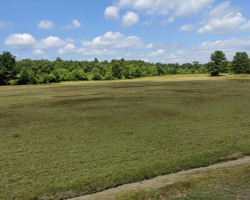 MANAGEMENT
MANAGEMENT
The adult beetle is targeted for management, but it is critical to note that they appear later in spring. Moreover, it is very problematic that damage is not obvious until late June/early July, just as most cranberry is in full bloom and bees are present. For sites with outbreaks observed in the previous year, a spray could go on if beetles are swept before bloom starts.
Diazinon is effective and Actara is also an option. Neither insecticide can be applied during bloom. If populations are still building post-bloom, a second application may be necessary.
BIOLOGY
The female beetle encases each egg with her excrement (called a pot). Eggs fall to the bog floor. The eggs hatch after 2 weeks and the tiny larvae are protected by their pot. The larvae feed on detritus on the bog floor; the larvae do not feed on the living cranberry vines or flowers. The mature larva seals up the case with its own feces and metamorphosis to the adult beetle occurs inside. Presently, we do not know what stage overwinters.


